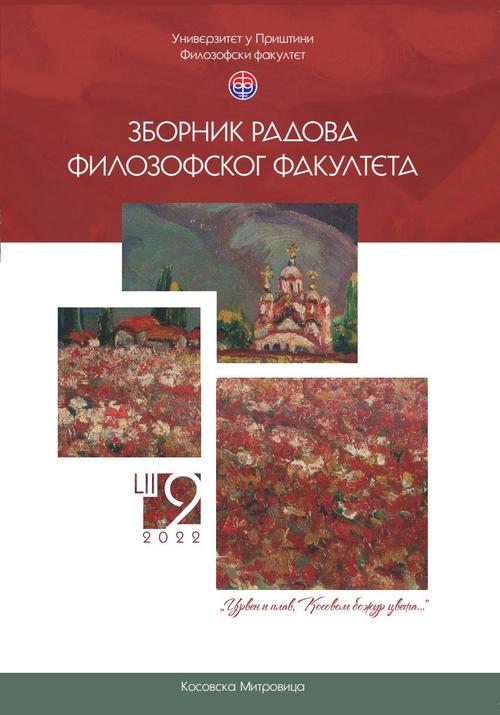Popular Culture and Intercultural Communication: The Voice and the Echo
Abstract
The primary goal of popular culture as the dominant form of culture in the 21st century should be to unite people in a cultural synergy. Popular culture as such should insist on the richness of diversity, not on stereotypes, which is the case today. This paper will analyze the concepts of communication, culture, intercultural communication, cultural imperialism as well as the influence of popular culture on intercultural communication. Popular culture is a key component in creating a social identity in the 21st century. It provides a sense of belonging and togetherness to people around the globe. That is why they rely on popular culture to understand the world around them, and for most people, the view of the world exists only through the prism of popular culture.
Although popular culture could be a hybrid space for bringing cultures closer, this is impossible today because the media deepens the gap between cultures with negative stereotypes by looking at other cultures through their own cultural prism. In order for cultures to come closer to one another, the media must be comprehensive in the way they present images in the broad category of meanings of the concepts of ‘culture’, ‘race’ and ‘nation’ so that people understand that culture exists on multiple levels of complexity, while popular culture presents a superficial (visible) part of culture based on which people mistakenly form a perception of a culture, which can be the cause of misunderstandings in intercultural communication.
References
Bakić-Mirić, N. (2020). Introducing Translation as Intercultural Communication. Kosovska Mitrovica: Filozofski fakultet.
Bakić-Mirić, N. (2012). An Integrated Approach to Intercultural Communication. Newcastle upon Tyne: Cambridge Scholars Publishing.
Brummet, B. (1994). Rhetoric in Popular Culture. New York: St. Martin’s Press.
Danesi, M. (2019). Popular Culture: Introductory Perspectives. New York – London: Rowman & Littlefield.
Dayer, R. (1993). The Matter of Images: Essays on Representations. New York: Routledge.
Fiske, J. (2011). Understanding Popular Culture. London – New York: Routledge.
Hall, E. T. (1990). The Silent Language. New York: Random House.
Hall, S. (1980). Encoding/Decoding. In: S. Hall, D. Hobson, A. Lowes, P. Willis (Eds.). Culture, Media, Language (128–138). London: Hutchinson.
Hofstede, G. J., Pedersen, P. B., & Hofstede, G. (2002). Exploring Culture. Maine: Intercultural Press.
Jandt, F. E. (2021). An Introduction to Intercultural Communication: Identities in the Global Community. Thousand Oaks, CA: SAGE.
Kadarisman, A. E. (2015). Linguistic Relativity, Cultural Relativity, and Foreign Language Teaching. TEFLIN Journal, 16 (1), 1–25.
Kotz, E. & Liebes, T. (1987). Decoding Dallas. Notes from a Cross-Cultural Study. In: H. Newcomb (Ed.). Television: The Critical View. New York: Oxford University Press.
Lucas, E. (2020, October 26). The Borat Films are Hilarious – For Some. The Sunday Times. Retrieved from: https://www.thetimes.co.uk/article/the-borat-films-are-hilarious-for-some-rnc38whb3Lustig
Lustig, M. W. & Koester, J. (2018). Intercultural Competence: Interpersonal Communication Across Cultures. Boston, MA: Pearson.
Martin, J. N. & Nakayama, T. K. (2018). Intercultural Communication in Contexts. New York: McGraw Hill Education.
Merrit, B. D. (2000). Illusive Reflections: African American Women on Primetime Television. In: A. Gonzales, M. Houston, V. Chen (Eds.), Our Voices (47–53). Los Angeles: Roxbury.
Neuliep, J. W. (2018). Intercultural Communication: A Contextual Approach. Thousand Oaks, CA: SAGE.
Newcomb, H. & Hirsch, P. M. (1987). Television and Cultural Forum. In: H. Newcomb (Еd.), Television: The Critical View. New York: Oxford University Press.
Samovar, L. A., Porter, R. E., McDaniel, E. R., Roy, C. S. (2017). Communication Between Cultures. Boston: Cengage Learning.
Sorrells, K. (2021). Intercultural Communication: Globalization and Social Justice. Los Angeles: SAGE.
Storey, J. (2021). Cultural Theory and Popular Culture. London – New York: Routledge.
Tan, A., Fujiioka, F. & Tan, G. (2000). Television Use, Stereotypes of African Americans and Opinions on Affirmative Action: An Affective Model of Policy Reasoning. Communication Monographs, 67 (4), 362–371.
Ting-Toomey, S. & Dorjee, T. (2019). Communicating Across Cultures. London – New York: The Guilford Press.
Tomlinson, J. (1991). Globalization and Culture. Chicago: The University of Chicago Press.
Tomlinson, Ј. (1999). Cultural Imperialism. London – New York: Continuum.
The details about the publication policy, including copyright and licensing, are available at:

